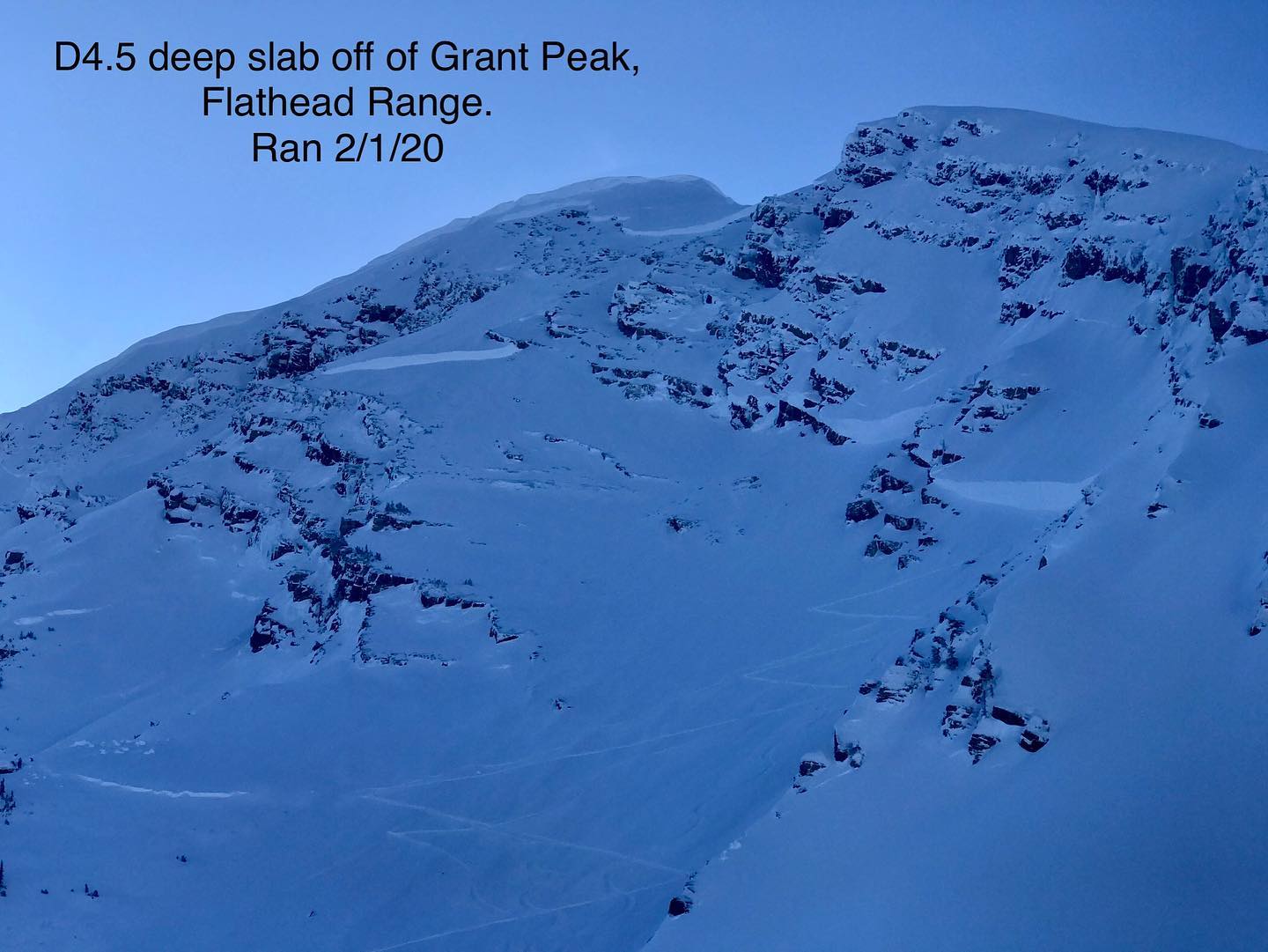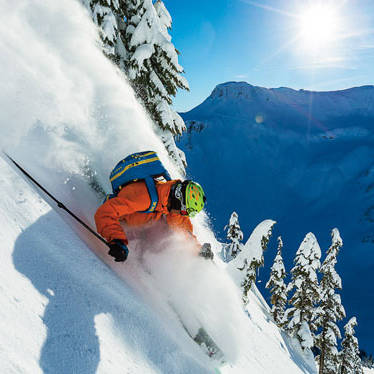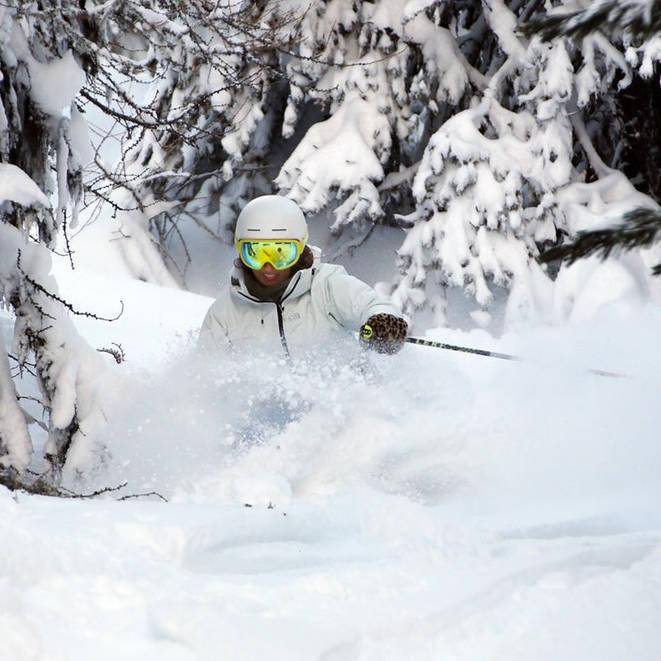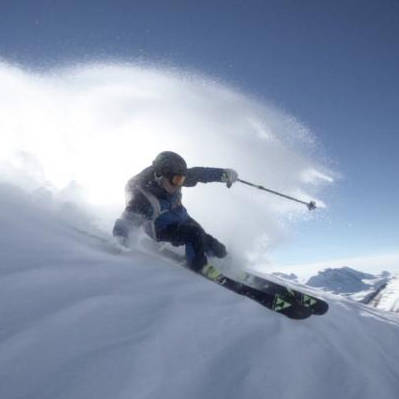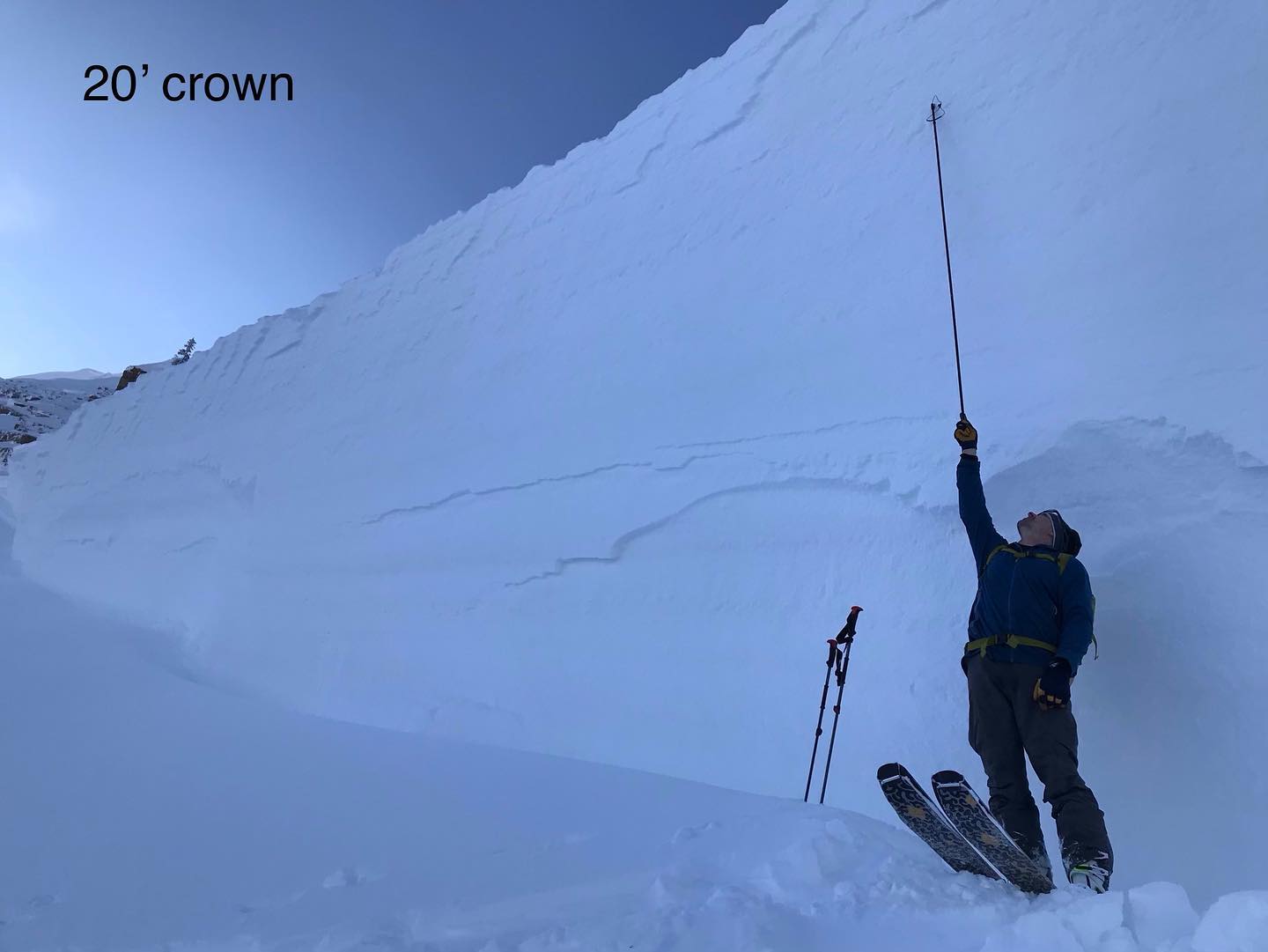
Since the start of February, MASSIVE avalanches have been wreaking havoc on the Flathead Range of Montana. Flathead Avalanche Center forecasters recently toured into Tunnel Creek, MT to assess the damage from the recent storm. They found the ‘royal flush’ of avalanche problems…deep slabs, glide avalanches, wind slabs, wet slabs, wet loose, all of which likely ran Friday night or Saturday. Here’s a summary, details in the avalanche tab, taken from the Flathead Avalanche Center:
-
Two D4 to D4.5 sized deep slabs ran off of steep, east and southeast facing alpine terrain on Grant and a sub-peak of Grant. The crown that we investigated was up to 20 feet deep, pencil to knife hard, failing on 1.5-2.5mm moist facets around a thin ice crust, near the ground. It ran around 4,000 vertical feet and left acres of debris that we estimate were 50 feet deep. The crown was above the rain line from the recent rain event; it was likely triggered by wind loading in collaboration with relatively warm temperatures.
-
Numerous wind slabs ran from upper elevations, generally ranging from one to two feet thick. While their size in the start zones was as expected, several of these evolved into surprisingly large D3 avalanches because they gouged into and entrained massive amounts of wet snow as they ran into lower elevations. We also noted at least one relatively shallow wet slab that exhibited the same destructive behavior.
-
We spotted one glide avalanche release on a rock slab of Great Northern.
-
The 2/1 crust reached up to 7,100′ but not beyond that. It was several inches thick and very strong until it suddenly transitioned to dry snow unaffected by rain.
-
There is up to 6″ of new snow over the 2/1 crust at upper elevations, and a dusting of new snow down low. We found a few soft drifts up to a foot thick that produced minor cracking. The new snow did not sluff either. We expect the new snow will be faceting above the crust under our current weather pattern, making for a persistent weak layer.
-
We felt comfortable skiing steep terrain below 7,000′, where the thick crust appears to add a nice safety buffer from any deeper instabilities.
Clearly, this recent storm brought with it a plethora of instabilities in the Flathead range. Extreme caution is advised when traveling in higher elevation terrain in the range.
